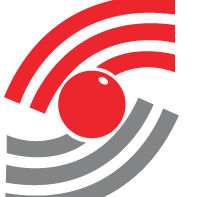Request Demo
Last update 08 May 2025
Hernia, Inguinal
Last update 08 May 2025
Basic Info
Synonyms DIRECT HERNIA, Direct Inguinal Hernia, Direct Inguinal Hernias + [85] |
Introduction An abdominal hernia with an external bulge in the GROIN region. It can be classified by the location of herniation. Indirect inguinal hernias occur through the internal inguinal ring. Direct inguinal hernias occur through defects in the ABDOMINAL WALL (transversalis fascia) in Hesselbach's triangle. The former type is commonly seen in children and young adults; the latter in adults. |
Related
7
Drugs associated with Hernia, InguinalTarget |
Mechanism SCNA blockers |
Active Org. |
Originator Org. |
Active Indication |
Drug Highest PhaseApproved |
First Approval Ctry. / Loc. China |
First Approval Date30 Nov 2022 |
Target |
Mechanism TRPV1 agonists |
Active Org. |
Originator Org. |
Active Indication |
Inactive Indication |
Drug Highest PhaseApproved |
First Approval Ctry. / Loc. China |
First Approval Date24 Jan 2003 |
960
Clinical Trials associated with Hernia, InguinalNCT06894420
Comparison of Postoperative Analgesic Efficacy of Ultrasonographic Bilateral TAP (Transversus Abdominis Plane) Block and Anesthetic Infiltration Into Preperitoneal and the Surgical Field in Laparoscopic Unilateral TEP (Total Extraperitoneal) Herniorraphy
Laparoscopic inguinal hernia repair is a common surgical procedure, but postoperative pain management remains a challenge. This prospective, randomized study aims to compare the analgesic efficacy of preperitoneal and surgical site anesthetic infiltration with ultrasound-guided bilateral transversus abdominis plane (TAP) block in patients undergoing laparoscopic unilateral total extraperitoneal (TEP) herniorrhaphy. Sixty patients will be randomly allocated into two groups: Group-I will receive preperitoneal and surgical site infiltration with bupivacaine, while Group-II will receive ultrasound-guided bilateral TAP block with bupivacaine. The primary outcomes will be postoperative pain scores assessed using the visual analog scale (VAS) and additional analgesic requirements. Secondary outcomes will include postoperative hospital stay duration and cost-effectiveness. Demographic data, ASA scores, comorbidities, and operation times will be recorded. Postoperative pain will be managed with a multimodal approach, including paracetamol and NSAIDs. Rescue analgesia will be provided with intravenous paracetamol. Statistical analysis will be performed using t-tests, ANOVA, Wilcoxon-Mann-Whitney tests, and chi-square tests, as appropriate. This study aims to determine the optimal and most beneficial method for postoperative pain management and patient comfort following laparoscopic inguinal hernia repair.
Start Date04 May 2025 |
Sponsor / Collaborator- |
NCT06915155
Safety and Efficacy of the Swing-Mesh™ Implant (THT BioScience™, B. Braun™, France) in Laparoscopic-endoscopic Inguinal Hernia Repair - a Multicenter, Cohort, Prospective Observational Study.
This multicenter, prospective observational study aims to assess the safety and efficacy of the Swing-Mesh™ implant (THT BioScience™, distributed by B. Braun™, France) for laparoscopic-endoscopic inguinal hernia repair using TAPP or TEP techniques. Swing-Mesh™ is a lightweight, macroporous, three-dimensional mesh designed to conform anatomically to the myopectineal orifice without requiring fixation. Eligible adult patients undergoing elective repair will receive the implant. The primary endpoint is hernia recurrence within 6 months. Secondary endpoints include postoperative pain, groin discomfort, and early and late complications. The study will provide clinical evidence regarding the non-inferiority of this spatial, fixation-free mesh compared to standard devices in minimally invasive hernia surgery.
Start Date07 Apr 2025 |
Sponsor / Collaborator |
NCT06879912
A Prospective, Post-Market Study to Evaluate the Clinical Utility of the Force Feedback Instruments in RAS Procedures Using the Da Vinci 5 Surgical System
The goal of this observational study is to understand the utility of force feedback instruments in surgeries that are done using the da Vinci 5 robot.
Start Date01 Apr 2025 |
Sponsor / Collaborator |
100 Clinical Results associated with Hernia, Inguinal
Login to view more data
100 Translational Medicine associated with Hernia, Inguinal
Login to view more data
0 Patents (Medical) associated with Hernia, Inguinal
Login to view more data
15,624
Literatures (Medical) associated with Hernia, Inguinal01 Jun 2025·Journal of Gastrointestinal Surgery
National trends in perioperative opioid prescription fills for inguinal hernia repair (2010-2021): a cohort study
Article
Author: Agala, Chris B ; Perez, Arielle J ; Brown, Patrick C M ; Ismail, Sherin
01 May 2025·International Journal of Surgery Case Reports
Transverse testicular ectopia presenting as an inguinal hernia in a 2-year-old child: Case report
Article
Author: Ganta, Ashagre Gebremichael ; Desta, Wintana Tesfaye
01 May 2025·Journal of Pediatric Surgery
Iterative Design and Manufacturing of a 3D-Printed Pediatric Open and Laparoscopic Integrated Simulator for Hernia Repair (POLISHeR)
Article
Author: Heo, Kayoung ; Greaney, Eric ; Muensterer, Oliver ; Zakani, Sima ; Stunden, Chelsea ; Haehl, Julia ; Joharifard, Shahrzad ; Jacob, John ; Rosenbaum, Daniel G ; R A Malik, Peter ; Lindner, Andreas
22
News (Medical) associated with Hernia, Inguinal23 Dec 2024
Tailored solutions can bridge critical gaps in clinical research and medical device design, driving equity for women and diverse populations.
For too long, the medical device industry has taken a one-size-fits-all approach to innovation, often neglecting the anatomical and physiological nuances of women and other underrepresented groups.
One of the many roots of this disparity runs back to the thalidomide tragedy of the 1960s, in which a morning sickness drug was linked to birth defects. Following public outcry, the FDA excluded women of childbearing age from clinical trials. This exclusion lingered for two decades, during which the majority of clinical research was conducted on male subjects, creating a systemic gap in data and understanding of women’s unique health needs.
Against this backdrop, leaders from across the medical device industry gathered at DeviceTalks West to discuss how the industry is tackling these inequities head-on.
Panelists included Dr. Jennifer Jones-McMeans, divisional VP of global clinical affairs at Abbott Vascular, who has pioneered efforts to enhance diversity in clinical trials; Hexagon Health CEO Dr. Shirin Towfigh, one of the few female hernia surgeons in the U.S., whose patented innovations are reshaping hernia repair; and Frontline Medical Technologies co-founder and CEO Dr. Asha Parekh, whose engineering expertise has driven the development of devices for critical care applications with specific focus on women’s anatomies.
Overcoming historical oversights in clinical trials
The historical lack of women in clinical trials has far-reaching consequences and has led to missed opportunities for improving care across all populations.
“Women present differently with cardiovascular disease symptoms. Their arteries are smaller, and their needs are often overlooked in design,” said Jones-McMeans.
Towfigh shared a particularly egregious example from her field. In hernia research, women were almost entirely excluded.
“There’s been about seven prospective randomized clinical trials for inguinal hernias. Over 10,000 patients enrolled, a total of 17 women. Only one of those trials had women. All the rest had zero,” she said. “That alone skews industry standards, skews what industry sees as how to design.”
This imbalance not only skews device performance data but also outcomes.
“The female pelvis is different, yet female patients are often misdiagnosed or underserved because the designs don’t reflect their needs,” Towfigh said.
Her patented hernia mesh redesigns aim to bridge this gap, reducing complications like chronic pain and dysfunction.
Parekh noted that while addressing the unique needs of women often highlights critical gaps in clinical trials, these innovations can ultimately benefit all patients.
“Our device is an aortic occlusion device, used specifically for postpartum hemorrhage,” she said. “Women have smaller arteries and pregnant women are susceptible to being hypercoagulable, so thrombosis is an issue. [But] it’s not just women in these emergency scenarios — men come into the emergency room too.”
To address these challenges, Parekh designed with these considerations in mind from the very beginning, prioritizing a smaller, minimally invasive device.
“We’re all trying to miniaturize minimally invasive [devices], everything as small and unobstructed as possible,” she said.
Starting with a focus on specific populations like women ensures that devices are better suited for all patients in the long run.
The role of representation in medical device design
Inclusive medical device design begins with diverse voices at the table. As one of the few female hernia surgeons, Towfigh said her practice sees a disproportionate number of female patients. This exposure gives her a unique lens to identify trends and unmet needs in her field.
“If I wasn’t here, who would notice these patterns?” she asked.
Parekh echoed the sentiment, saying, “Whether it’s engineers, clinicians, or trial participants, representation matters at every stage of development. You can’t design for a population you don’t truly understand.”
Abbott’s approach, as described by Jones-McMeans, involves both top-down and grassroots strategies. Abbott is intentionally recruiting more women for leadership roles in clinical trials and as investigators at clinical site, and made a concerted effort to ensure gender parity among study participants.
“We’ve partnered with organizations like Women as One to support female physicians and MedtechWomen to promote inclusivity,” she said. “Internally, we created a diversity and research office to ensure these priorities are embedded across our clinical trials.”
Investment in inclusive innovation
Funding remains a significant barrier to advancing gender-sensitive medical device design. Historically, investors have hesitated to fund devices tailored to smaller patient populations, often viewing them as niche markets. But this mindset is shifting.
”Many investors are simply unaware of the market opportunity until you present the data,” Parekh said, emphasizing the importance of using clinical and market data to build a compelling case during funding pitches.
Towfigh’s solution has been to self-fund her innovations, which isn’t always an option.
“It’s tough because you have to convince industry to invest money in a niche product … for a small proportion” of the population, she said.
Beyond gender and toward truly inclusive innovation
While much of the discussion focused on women, the broader goal is designing for diverse anatomies.
“Whether it’s pediatric patients, underserved ethnic groups, or individuals with unique physiological needs, personalized medicine is the future,” Parekh said.
Inclusive innovation — whether addressing women’s cardiovascular needs or designing for pediatric patients — has far-reaching benefits. But it won’t be achieved overnight, as systemic change takes sustained effort and collaboration.
“It’s a long game,” Jones-McMeans said. “The efforts we’re putting in now may not bear fruit until decades down the line. But maybe in 30 years, there’s a different group of women sitting here talking about the fruits of the work we’re doing today.”
Parekh was optimistic, given the growing momentum behind inclusive medical device design.
”I think we have come such a long way in terms of moving things forward for not just women but for diverse anatomies,” she said.
Towfigh shared in the optimism, emphasizing that progress comes through persistence and building a solid foundation of data. “You just have to keep pushing,” she said. “It takes time. People need to start hearing it over and over and over again, and you have to persist.”
13 Nov 2024
The suit alleges Medtronic violated Hexagon Health's patents in developing and selling Dextile, a hernia mesh repair device.
BEVERLY HILLS, Calif., Nov. 12, 2024 /PRNewswire/ -- Hexagon Health Inc. and its founder Dr. Shirin Towfigh, one of the world's leading hernia repair surgeons, filed a lawsuit in Delaware today against Medtronic, alleging that the multinational medical device manufacturer infringed three of Hexagon Health's patents related to hernia mesh treatment devices.
The lawsuit asserts that Medtronic copied Hexagon Health's designs for an inguinal hernia mesh repair device, known as Dextile, that includes broad coverage with a fin shape to better serve patients and reduce complications following surgery. The suit further charges that Medtronic knowingly continued to manufacture and sell the device even after the U.S. Patent Office formally awarded Hexagon Health's patents on Dr. Towfigh's improved mesh.
"Medtronic's improper use of Hexagon Health's hernia mesh designs has cost Dr. Towfigh significant financial gain and created a disincentive for other physician-entrepreneurs to enter the medical device marketplace with innovative products for patients in need," said Nicholas Groombridge, Hexagon Health's attorney and partner at Groombridge, Wu, Baughman & Stone LLP. "Medtronic has a history of infringing patents and failing to honor agreements with physician-inventors, and we look forward to addressing this matter in court."
Dr. Towfigh is an experienced surgeon and a leading expert on hernia care. She founded Hexagon Health in 2015 to revolutionize hernia care and protect patients from surgical hernia complications. Her re-designed inguinal hernia mesh device ensures broad coverage of the groin area to reduce hernia complications for patients, particularly, women, for whom inguinal hernias can be fatal.
SOURCE Hexagon Health
WANT YOUR COMPANY'S NEWS FEATURED ON PRNEWSWIRE.COM?
440k+
Newsrooms &
Influencers
9k+
Digital Media
Outlets
270k+
Journalists
Opted In
GET STARTED
Patent Infringement
13 Aug 2024
TUESDAY, Aug. 12, 2024 -- At least 20 million hernia surgeries are performed globally each year, making it one of the most common medical procedures in the world. But does gender matter when it comes to hernia risk?
New Australian research says yes: Half of the nearly 436,000 hernia repair procedures performed in adults in that country between 2017 and 2021 were for inguinal (groin) hernias, with men accounting for 89.6% of those operations. And the age-standardized prevalence in men was more than seven times that of women.
Inguinal hernias were the most common type of hernia seen in the study.
Why are men more susceptible? Researchers say the gender difference is due to higher rates of smoking, heavy exercise, bladder issues, chronic airway disorders, hypertension and heart disease.
It’s important that doctors know "those patients who have higher risks of hernia repair, so we can develop health campaigns and policies to improve their quality of life and lower their risks of developing hernias,” study co-author
Dr. Marianne Gillam
, from the University of South Australia, said in a university news release.
A
hernia
occurs when one of your organs pushes through the muscle or tissue that contains it. This can trigger discomfort and abdominal pain and in severe cases can strangulate the bowel, which requires emergency surgery.
In the study, the team turned to data from the Australian Institute of Health & Welfare (AIHW) to crunch the numbers for five different types of hernia operations, identifying what age groups and genders were at highest risk.
What did they find? Males had a far higher incidence of inguinal hernias compared to females, with lifetime risks of 27% and 3%, respectively.
While folks between the ages of 60 and 64, and particularly men in that age group, were at most risk overall for any kind of hernia surgery, women were more prone to repairs of femoral hernias in the upper part of the thigh, and incisional hernias, a common side effect of abdominal surgery, the researchers found.
Still, when it came to surgery for abdominal hernias across all age groups, men were at much higher risk, although women between the childbearing ages of 20 and 39 were more likely than men in their age group to have an epigastric hernia operation (performed between the sternum and belly button).
The findings were published recently in the
Critical Public Health
journal.
Gillam noted that despite high annual rates of
hernia
surgery worldwide, few studies have tried to break those numbers down by age and gender.
Whatever your topic of interest,
subscribe to our newsletters
to get the best of Drugs.com in your inbox.
Clinical Result
Analysis
Perform a panoramic analysis of this field.
login
or

AI Agents Built for Biopharma Breakthroughs
Accelerate discovery. Empower decisions. Transform outcomes.
Get started for free today!
Accelerate Strategic R&D decision making with Synapse, PatSnap’s AI-powered Connected Innovation Intelligence Platform Built for Life Sciences Professionals.
Start your data trial now!
Synapse data is also accessible to external entities via APIs or data packages. Empower better decisions with the latest in pharmaceutical intelligence.
Bio
Bio Sequences Search & Analysis
Sign up for free
Chemical
Chemical Structures Search & Analysis
Sign up for free




